Straddling the frontier between France and Spain, Euskal Herria—the heart-shaped homeland of the Basque people—is easy to love. A lush and green region blessed by humid oceanic climate, its curvaceous beaches and wild hills of wandering heath are moody muses for painters, poets, and photographers.

The portion of the Basque Country that lies in France is called Iparralde, literally “the northern side.” Owing to its surf lore and aristocratic ties, it’s carved out a covetable reputation distinct from its larger, better-known southern counterpart. Northern Basque Country is as luxuriant as it is free-spirited—with an unmistakeable French chic.


The stretch of coastline running alongside the French Basque Country is a colorful smorgasbord of seafront villas, surf lodges, and rustic half-timbered farmhouses, all of which can be seen from the 15-mile-long Sentier du Littoral. This coastal trail, which takes six hours from start to finish, is the best way to sponge up as much of the landscape as possible in a single day. Beginning by the wide sandy shores of Bidart, the path weaves through the fishing villages of Guéthary, Saint-Jean-de-Luz, and Ciboure before crescendoing into a spectacular corniche and coming to an end in enchanting Hendaye by the Franco-Spanish border.

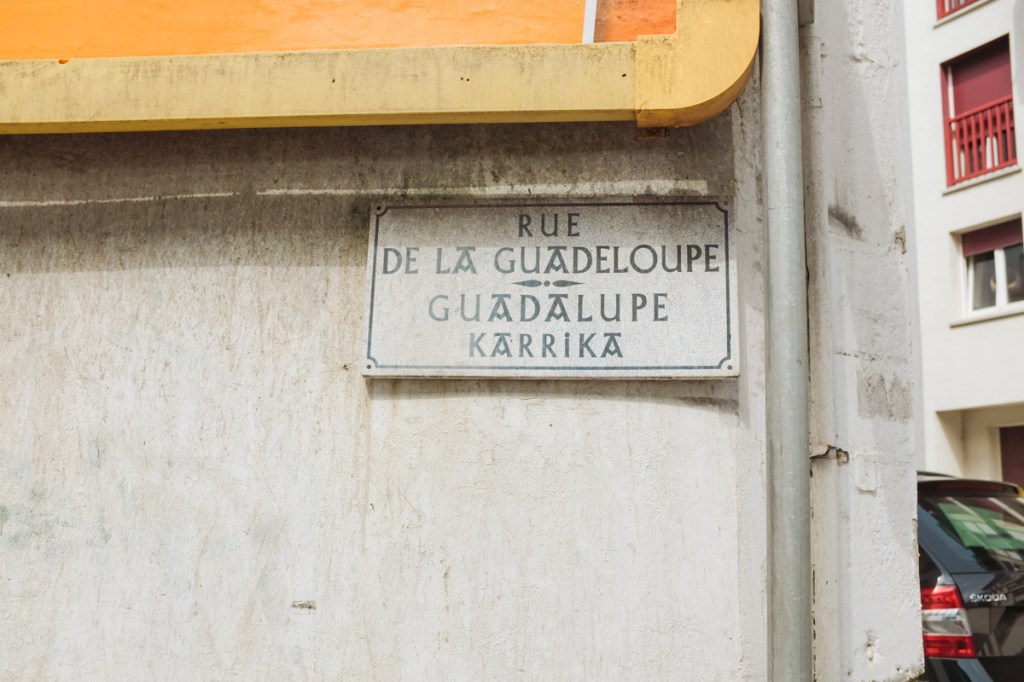

Tucked between the Pyrenees Mountains and the rolling Atlantic waves, the settlements of Iparralde are born out of the serendipitous union of nature’s elements and the human hand. Despite their proximity, each community has developed an individual character: none is like the other. Come and explore the inspiring and ever-stirring towns and cities of the French Basque Country!


Biarritz · Miarritze
The word ritzy didn’t derive from Biarritz, but it may just as well have. Originally a humble village of two districts—Saint-Martin (home of Basque farmers) and Port Vieux (settled by Gascon fishermen)—the fate of Biarritz was changed forever when, in 1854, Napoleon III constructed a villa for Empress Eugénie on its dunes. The imperial couple’s annual summer visits transformed Biarritz into a fashionable seaside resort for selected society. While on his honeymoon, Pablo Picasso channeled his inspiration from the town’s Grande Plage into his 1918 painting, Les Baigneuses. Today, Biarritz continues to attract and dazzle travelers searching for ocean-based wellness and marine therapy.




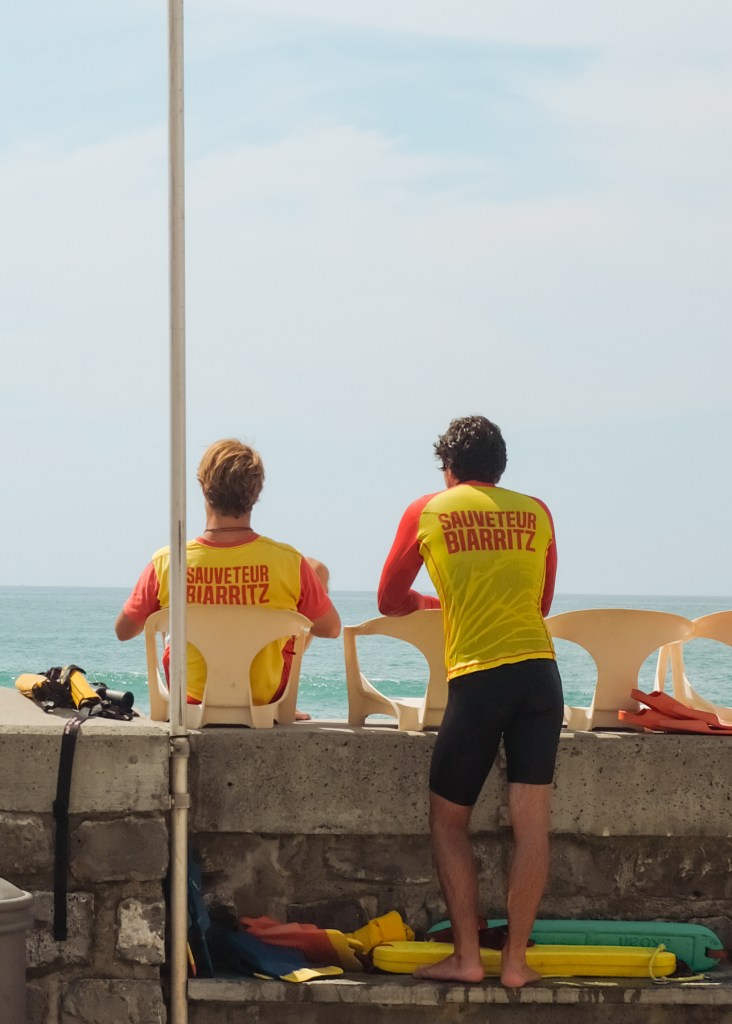
Beyond its sophisticated elegance, Biarritz has another claim to fame. Its southern seafront neighborhood of Côte des Basques is the cradle of French surf. In September of 1956, American screenwriter Peter Viertel was the first to ride the waves of Biarritz using a board brought over from California during the production of the film The Sun Also Rises. The founding of the first club towards the tail of the 1950s lent the city a hip new vibe that extended to the neighboring towns of Bidart and Hossegor.

Aura, sidus, mare adjuvant me
—City motto of Biarritz
The wind, the stars, and the sea are on my side
Bayonne · Baiona
Bayonne, birthplace of the bayonet, is the largest city in the French Basque Country as well as its cultural capital. The streets of the old town preserve some of the best examples of urban Basque architecture, featuring narrow half-timbered houses with shutters painted in eye-catching reds and greens—colors of the Basque flag.


Bayonne is steeped in the aromas of authentic Basque Country. Its alleys are lined with shops, bakeries, and restaurants where visitors can taste mouthwatering regional fare such as axoa (a piquant ragout made of mashed veal or duck and hand-picked peppers from the village of Espelette) and chipirons à l’encre (baby squid cooked in their own ink). Bayonne is France’s capital of cocoa, after Jews fleeing the Spanish Inquisition settled in this part of the country, bringing with them a rich knowledge of chocolate-making. At the tearoom of Cazenave, the chocolat mousseux—served with a sparkling cloud of foam—is still whisked by hand as it has been done for hundreds of years. Other iconic dishes and products such as biskotx (a Basque gâteau filled with black cherry jam) or the city’s famous cured ham are unique to the North and not seen on the Spanish side, Hegoalde.

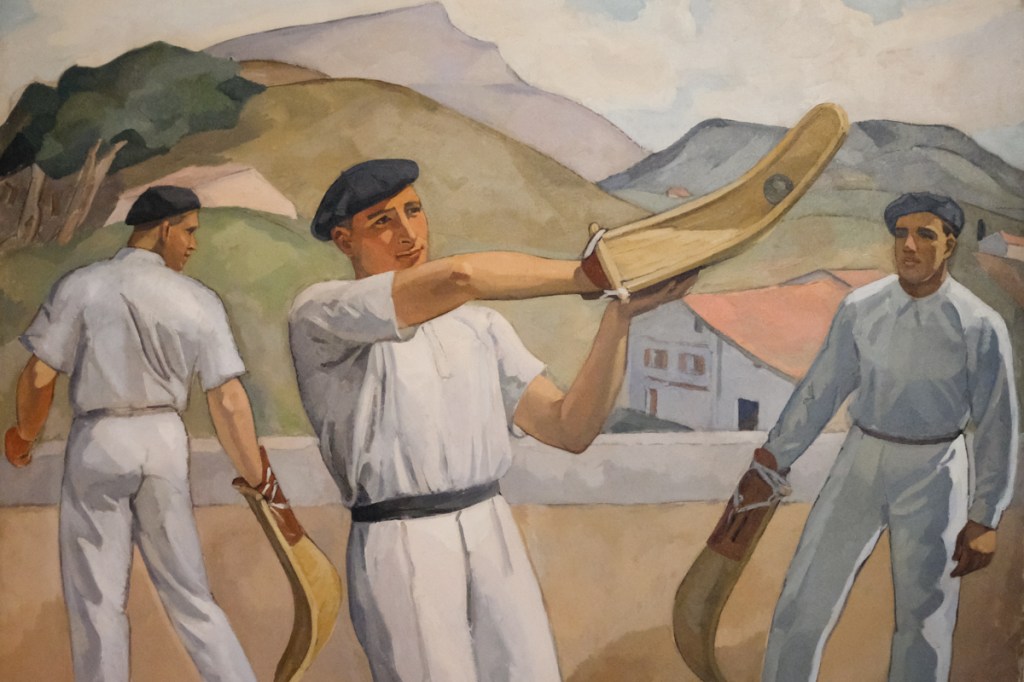

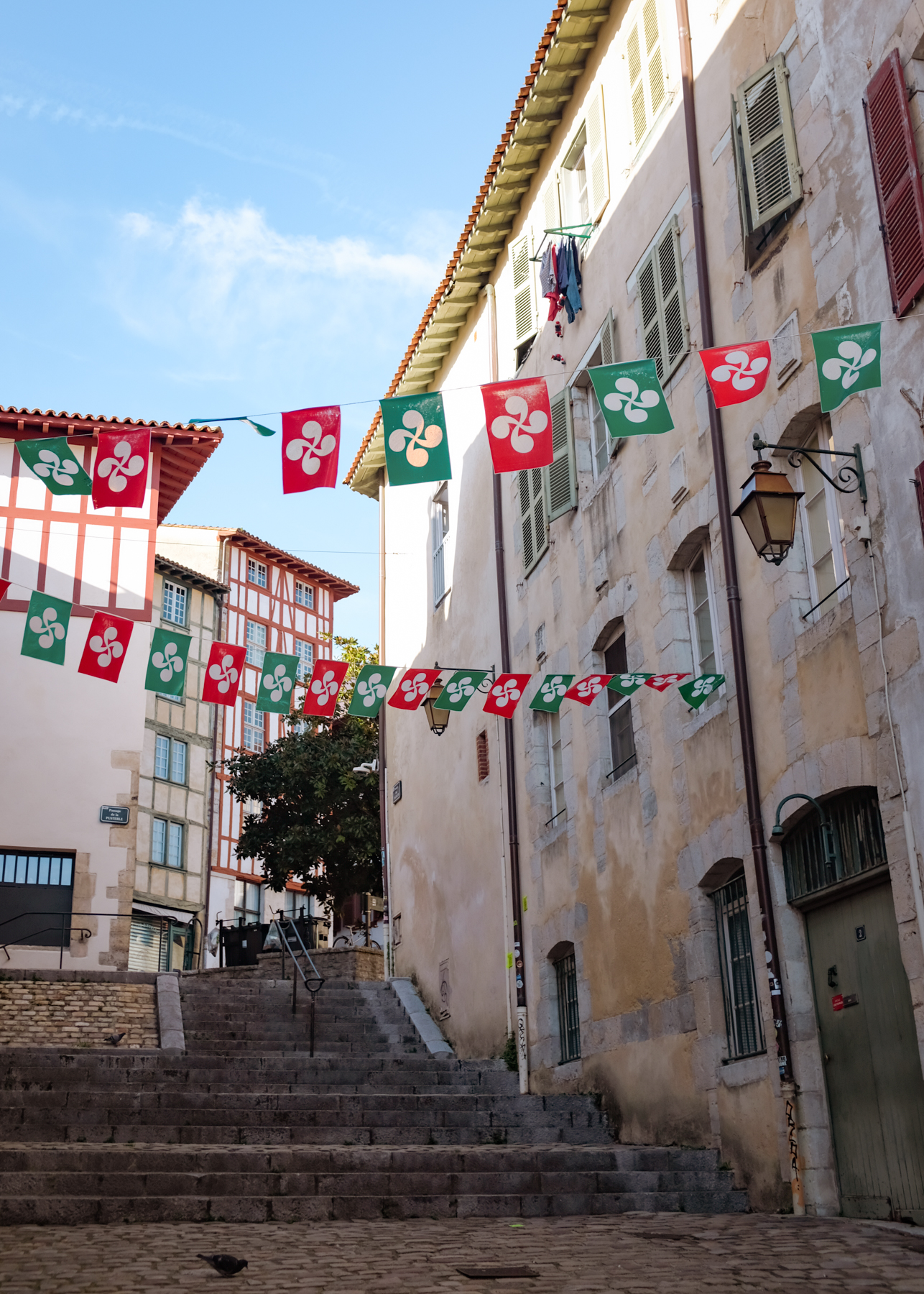
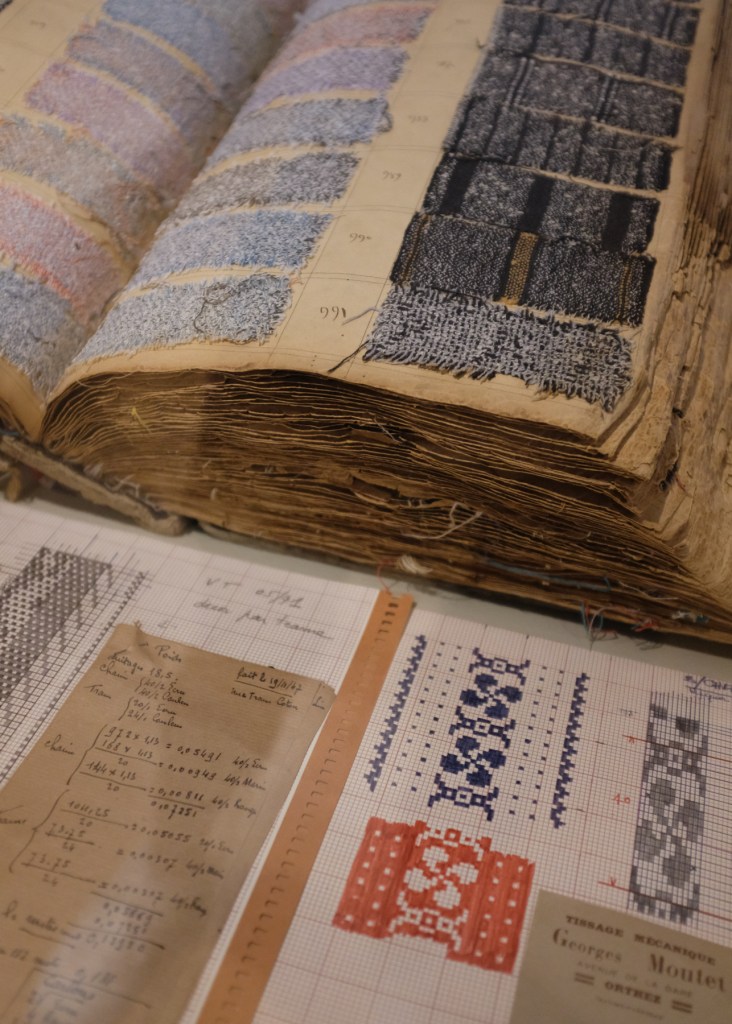
By the banks of the Nive in the lively old quarter of Petit Bayonne is the Musée Basque, which houses an extensive ethnographic collection dedicated to Basque life, language, and culture. Apart from a rich curation of artworks and objects, it explores Bayonne’s history at the confluence of Basque, Gascon, and Jewish traditions.
Hemen sartzen dena bere etxean da
—Basque atalburu, or decorative lintel
He who enters here is at home
Hendaye · Hendaia
France’s most southwesterly town, Hendaye, is resplendent with charm and natural beauty. Its surrounding landscape evokes wistful memories of a bygone age, long before high society and surfers set up their summer homes and shacks along the Aquitaine coastline. Out by the blustery Basque Corniche, a ledge path that meanders over jaw-dropping sea cliffs and soft eggshell-blue waters, the heights paint a picture of what the Basque Country looked like centuries ago. Farmhouses with gently sloping rooftops and timber frames stained red with oxblood decorate the prairies. These baserri played a vital part in protecting the survival of the Basque language during times when the speaking of minority languages in the public sphere was frowned upon and even punishable in France.

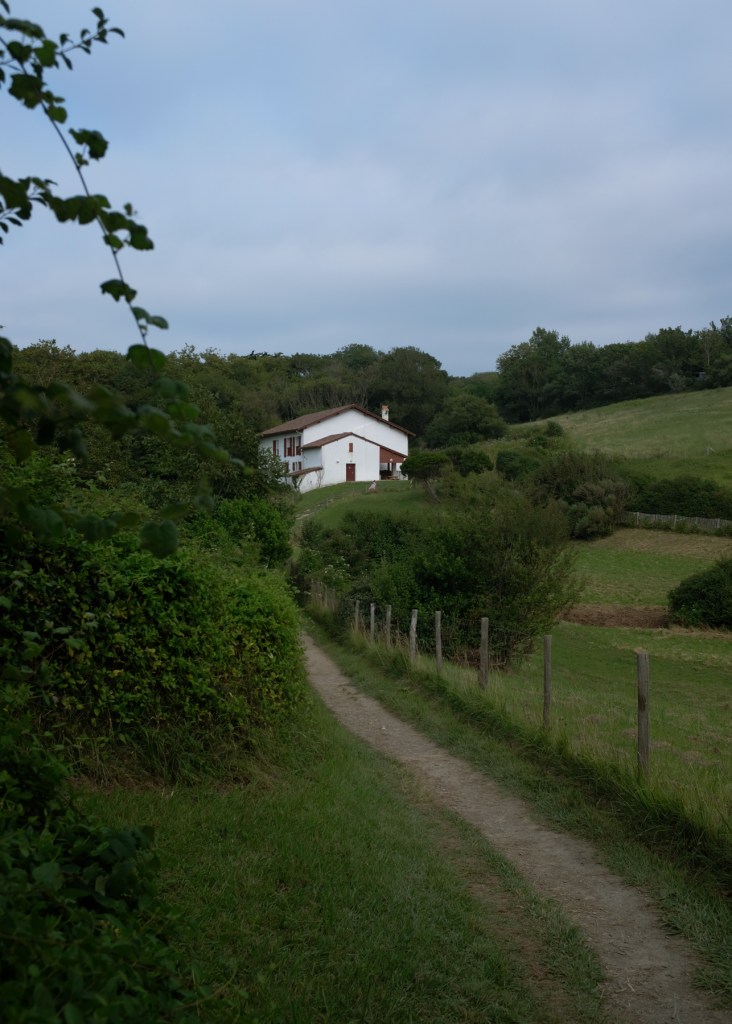



Overlooking the domains of Hendaye in the middle of an open moor, the neo-gothic Château-Observatoir Abbadia was built between 1864 and 1884 and was inspired by the fortified castles of the Middle Ages. Its façades are decorated by phantasmal savannah imagery, including crocodiles and elephants locked in combat and stone monkeys gazing up to the stars. Most of the estate, or domaine, can be explored freely. Tranquil footpaths connect the castle’s surrounding orchards to Hendaye’s freewheeling naturist beach, and after dusk, the area becomes a sanctuary for moonlight trysts.
Getting around the French Basque Country
Getting around France’s Basque coast can be easily done by bus or by train. With local TXIK TXAK buses, it’s possible to travel across the entire French Basque Country with a single ticket that can be loaded at bus stop ticket machine or onboard. The French national rail SNCF also serves every major town along the Basque coast: Bayonne, Biarritz, Guéthary, Saint-Jean-de-Luz—Ciboure, Deux Jumeaux (Hendaye beach), and Hendaye.
